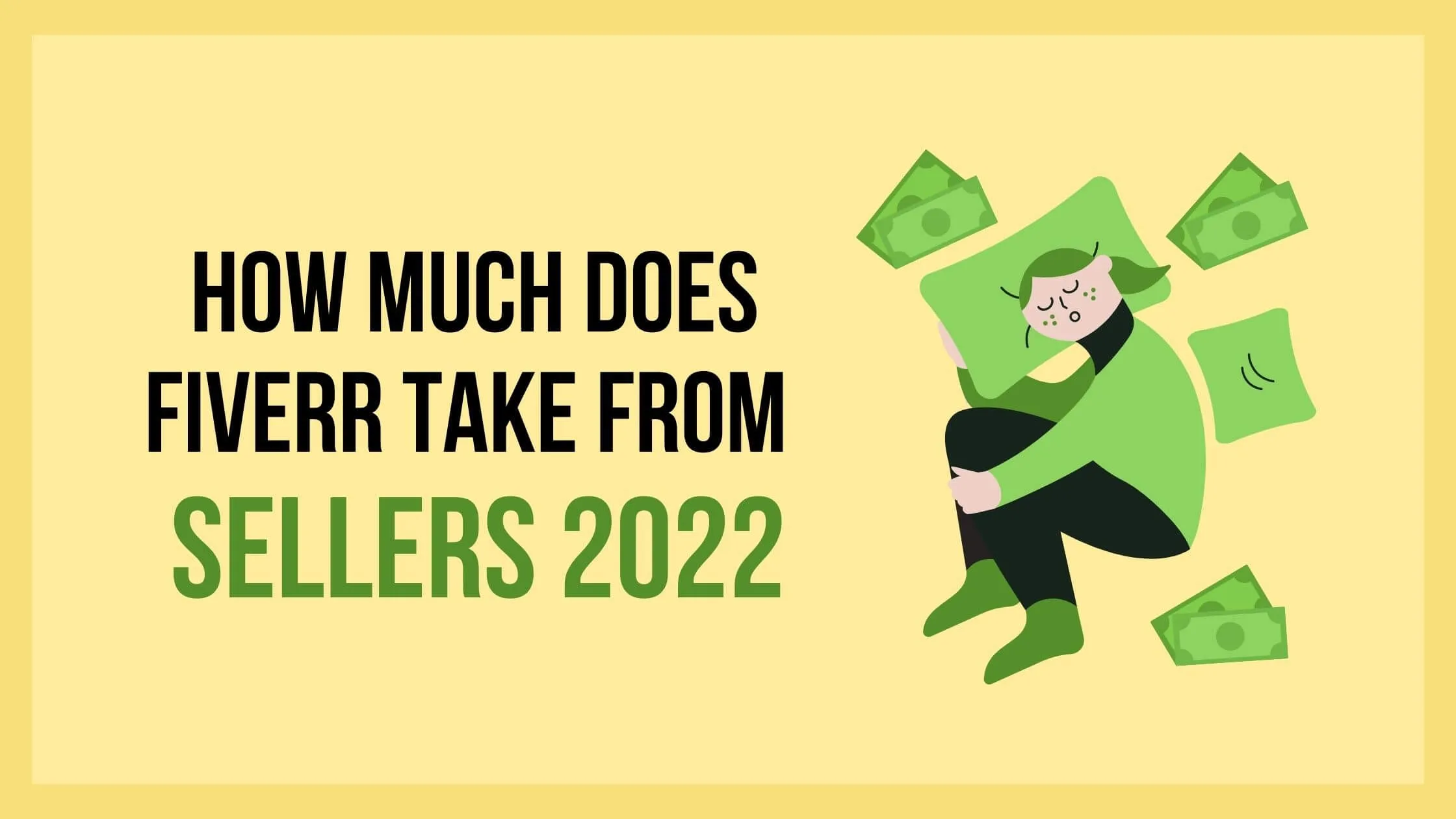Fiverr has emerged as a popular online marketplace where freelancers can offer their services to clients all around the globe. Founded in 2010, it has transformed the way people think about work and creativity. The platform allows freelancers, often referred to as "sellers," to list their services, which can range from graphic design to digital marketing and even quirky gigs like having a cartoon made of your pet!
The beauty of Fiverr lies in its user-friendly interface and a vast range of services, known as "gigs," that cater to diverse needs. Clients, or "buyers," can browse through countless options, compare prices, and read reviews before making a decision. Fiverr's business model revolves around a transactional framework that benefits both sellers and buyers. Sellers showcase their talents, while buyers gain access to affordable professional services. But what's in it for Fiverr? Let's dive deeper into their commission structure to understand how they profit from these transactions.
Overview of Fiverr's Commission Structure

Understanding Fiverr's commission structure is crucial for freelancers and clients alike. Primarily designed to support and sustain the platform, this structure dictates how much sellers earn versus how much Fiverr retains. So, what does it look like?
- Service Fees: Fiverr charges sellers a commission of 20% on every transaction. This means if a seller offers a gig for $100, they will receive $80, while Fiverr retains $20 as their service fee.
- Buyer Fees: In addition to the seller's commission, Fiverr also imposes a service fee on buyers. This fee can vary but typically ranges from $2 to $5 based on the order price.
- Clear Transparency: Fiverr is upfront about these fees, outlining them in their Terms of Service. This transparency helps set clear expectations for both buyers and sellers.
To summarize:
| Transaction Type | Percentage/Fee |
|---|---|
| Sellers' Commission | 20% |
| Buyers' Service Fee | $2 - $5 (depending on order size) |
While Fiverr's 20% commission may seem hefty at first glance, it covers the platform's operational costs, marketing, and support services. In exchange, sellers gain access to a global market of potential buyers without having to invest deeply in marketing their services.
So, whether you're a freelancer diving into this vibrant platform or a buyer seeking services, understanding Fiverr's commission structure can help you navigate the marketplace more effectively!
Also Read This: A Comprehensive List of Fiverr Gigs Suitable for Everyone
3. Different Types of Services and Their Commission Rates

When we talk about Fiverr, one of the first things that come to mind is the variety of services offered on the platform. Each service category has its own unique commission structure, which is essential to understand if you're looking to sell your skills. Let's break it down:
- Graphic Design: This is one of the most popular categories on Fiverr, and it usually sees commission rates around 20%. This means if you sell a design for $100, Fiverr takes $20.
- Writing & Translation: If you're a wordsmith, the commission here is also about 20%. So, for every $100 gig, you'd be left with $80.
- Digital Marketing: Whether you're offering social media management or SEO services, expect a commission of approximately 20%. Again, that $100 gig translates to $80 in your pocket.
- Video & Animation: The commission structure remains the same at 20%, allowing creators to focus on their craft without sweating over fees.
- Music & Audio: Musicians and audio producers will also find that Fiverr takes a 20% cut of their earnings from gigs priced at any amount, ensuring consistent commission rates across multiple service types.
Overall, the commission stays consistent across the platform, which simplifies things for buyers and sellers alike. Remember, these percentages can impact how you price your gigs. It's smart to factor in these fees to ensure you get what you deserve!
Also Read This: How to Open Source Files from Fiverr
4. Factors That Affect Fiverr’s Commission Rates
While Fiverr maintains a straightforward commission rate structure, a few factors can influence how much you ultimately take home. Let's dig into some of these considerations.
- Gig Pricing: The price point of your gigs can affect perceived value and, consequently, the total earnings after commission. If you price too low, you may find the commission rate feels more significant than if you set a higher price.
- Extras and Add-ons: Many sellers offer gig extras that can significantly increase revenue. Fiverr takes a commission on these add-ons, too, meaning that high-value extras can also tilt the scales a bit regarding what you earn after fees.
- Seller Level: As you grow on Fiverr and advance through different seller levels (New Seller, Level One, Level Two, and Top Rated Seller), you may gain access to perks that could influence your overall revenue and what you choose to charge, although the commission itself remains fixed.
- Buyer Requests: Utilizing buyer requests can lead to more sales, but remember that Fiverr takes its cut from these gigs too. Finding the right balance between getting gigs and the commission rate is key.
- Currency Fluctuations: If you're working internationally, be aware that currency conversion rates can indirectly affect your earnings. Fiverr typically pays in USD, so fluctuations might impact how lucrative certain gigs feel.
Understanding these factors can empower you to make smarter decisions about pricing and marketing your services, maximizing your earnings while navigating Fiverr's commission structure.
Also Read This: How to Deliver a File to the Buyer on Fiverr
Comparison of Fiverr's Commission with Other Freelance Platforms
When it comes to freelancing, Fiverr isn’t the only option out there. Understanding how Fiverr's commission structure stacks up against other freelance platforms can help you make informed choices about where to offer your services. Let’s break it down a bit.
Fiverr takes a 20% commission on every transaction, which means if you sell a gig for $100, you’ll keep $80. This is a common standard among many freelance websites, but let's compare how other popular platforms measure up:
| Platform | Commission Rate | Minimum Withdrawal |
|---|---|---|
| Fiverr | 20% | $5 |
| Upwork | 20% on first $500 10% on $500.01-$10,000 5% on amounts over $10,000 |
$1 |
| Freelancer | 10% | $10 |
| PeoplePerHour | 20% for the first £500, then decreases | £20 |
As you can see, Fiverr’s flat 20% commission is somewhat in the middle of the pack but leans toward the higher side when you consider platforms like Freelancer offering a 10% cut. The commission structure can affect your overall earnings, so it’s essential to gauge your options based on your specific freelance needs.
Also Read This: How to Get Orders for My Fiverr Gigs
How to Maximize Your Earnings on Fiverr
Maximizing your earnings on Fiverr isn’t just about setting the right prices; it encompasses a strategic approach to how you present your services. Here are some practical tips that can help you bolster your income on the platform:
- Optimize Your Gigs: Use keywords effectively in your titles and descriptions to improve visibility. Think about what potential clients might be searching for.
- Create Attractive Visuals: Use high-quality images and videos that showcase your work. Buyers are often drawn to visuals that communicate professionalism and creativity.
- Offer Packages: Consider creating tiered service packages. For instance, you might offer a basic, standard, and premium tier with varying levels of service. This can cater to different budgets and project needs.
- Focus on Customer Service: Communicating promptly and being receptive to feedback can lead to better reviews. Good ratings boost your visibility and credibility.
- Delivering Quality Work: The ultimate way to ensure repeat clients is to offer excellent quality in every job. Happy clients are more likely to return and recommend your gigs to others.
To wrap it up, being proactive about how you manage and promote your gig can significantly influence your earnings. Fiverr is a powerful platform, but your success depends on how effectively you navigate it!
How Much Commission Does Fiverr Take?
Fiverr is a popular online marketplace where freelancers offer services ranging from graphic design to digital marketing. Understanding the commission structure of Fiverr is crucial for both buyers and sellers to ensure transparency and fair pricing. Here’s a detailed breakdown of many aspects surrounding Fiverr's commission.
Commission Structure
Fiverr's commission mainly impacts sellers, where they charge a percentage of the total sale price. Here is an outline of the fees involved:
| Service Type | Fiverr Commission |
|---|---|
| Standard Services | 20% of the total price |
| Custom Offers | 20% of the total price |
| Buyers' Fees | $2 on orders up to $40 and 5% on orders over $40 |
Additional Costs
Aside from the standard commission, sellers must also consider other potential costs:
- PayPal Fees: Depending on the payment method, additional transaction fees may apply.
- Currency Conversion Fees: If your currency differs from Fiverr's, conversion fees could affect your earnings.
Incentives for Higher Earnings
Sellers can take advantage of the Fiverr Pro program, which offers better visibility and higher rates. Yet, it also requires a rigorous vetting process.
In conclusion, comprehending Fiverr's fee structure is vital for freelancers to make informed pricing decisions and maximize their earnings on the platform.



